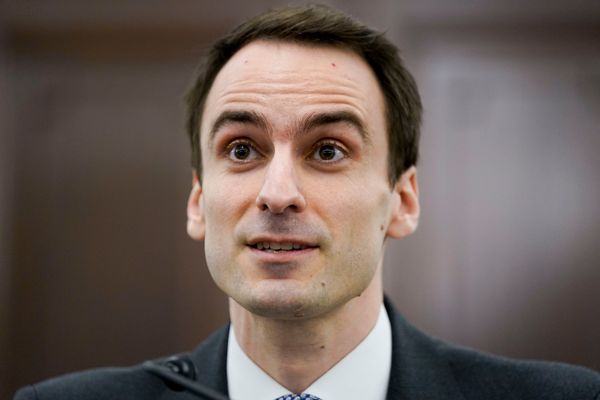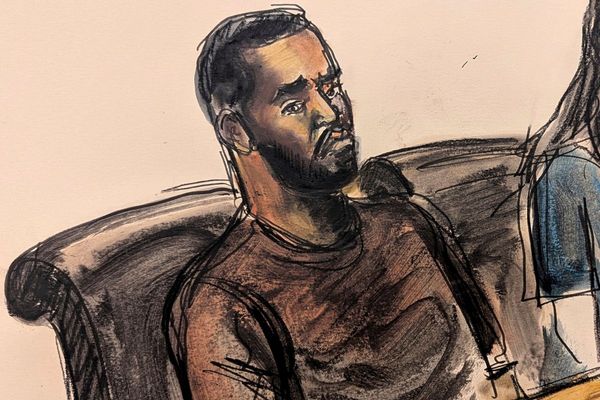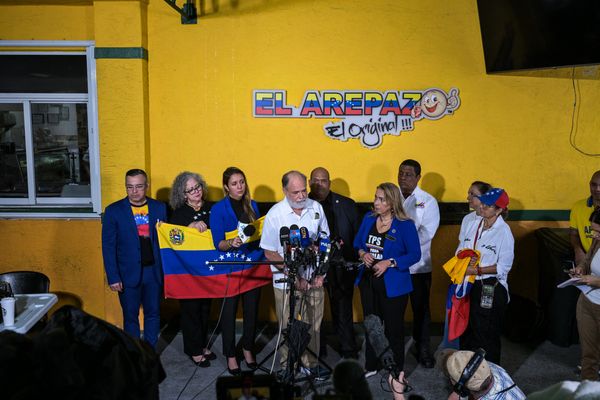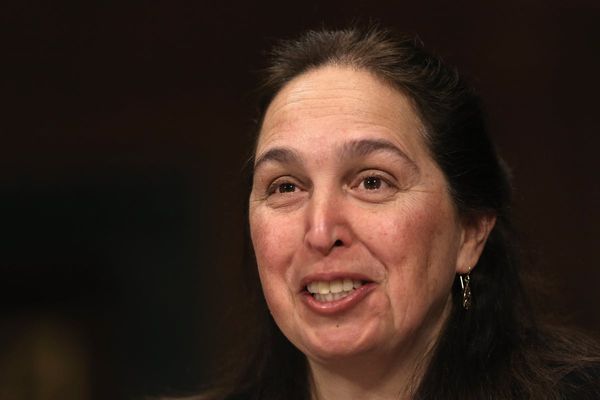
A podium sweep, a first-time rookie winner and a team that had not existed until weeks before the first round breaking through against the category’s giants. There was no shortage of feel-good stories following American Spirit Team Johansson driver Ryan Hunter-Reay’s victory in what turned out to be the final CART race of 2003 at Surfers Paradise.
But a race that is today viewed as the end of an era as the 95th and final victory for Reynard in US open-wheel competition, at the same track Michael Andretti gave the company its customary debut win in 1994, went very much against the run of play for a year dominated by Lola.
Between 1995 and 2001, every CART champion had driven a Reynard. Reynard’s win tally had been in double figures every year spanning 1997 to 2001 – winning all bar three races across 1998-99. That played a part in convincing Roger Penske to buy a customer car, instead of utilising his own chassis division in Poole, a decision which yielded back-to-back titles in 2000-01 with Gil de Ferran.
But Reynard’s dominant streak had ended in 2002, following the company’s bankruptcy earlier in the year and Penske’s defection to the all-oval Indy Racing League, with Cristiano da Matta’s triumph aboard a Newman/Haas Lola. Reynards still won three times that year, but by 2003 it had turned into a landslide and for the minority driving Reynards it was a year of toil.
“It was a season of basically drinking from a fire hose for the team, myself as well,” recalls Hunter-Reay, who led Walker Racing’s Darren Manning and ASTJ team-mate Jimmy Vasser across the line on a dramatic away day in Australia before Californian wildfires forced the cancellation of the planned finale at Fontana.
Toyota Atlantic graduate Hunter-Reay recognised quickly what had already been apparent to most of the championship’s leading teams: that the Lola B02/00 was a superior product to the Reynard 02I, which tended to lose downforce as ambient temperature increased and was more sensitive to ride height changes. Already during 2002 Team Green and Mo Nunn Racing – both would switch to the IRL along with Chip Ganassi Racing for 2003 as the pull of the Indianapolis 500 continued to hurt CART – had quickly ditched their Reynards for Lolas.

But a late start to 2003 for the start-up ASTJ outfit financed by investors Chris James and Dan Benton, with ex-Formula 1 ace Stefan Johansson as team principal, meant a Reynard was its only realistic choice at such short notice. The ex-Forsythe Racing cars were duly acquired.
“The Reynard really compared to the Lola was just insufficient when it came to bumpy road courses or bumpy street circuits,” explains Hunter-Reay, who for 2004 switched to a Herdez Lola. This he found on street circuits and lower-grip tracks was “a bit more forgiving” and encouraged drivers “to push a bit harder; you could get away with a bit more and sustain that level of grip through the frequency of bumps”.
Only six Reynards were entered for 2003 compared to 13 Lolas. And of the Reynard contingent, only Vasser had any previous experience in the series. Like Hunter-Reay, Manning and Walker team-mate Rodolfo Lavin, Tiago Monteiro (Fittipaldi-Dingman Racing) and Mario Haberfeld (Conquest Racing) were all finding their way.
At no point had Reynard looked likely to get among the winners in 2003 as the circus headed Down Under
“All these teams went to Lola for a reason and even when we felt we were performing at our best, you could see the performance gap to the Lola on street circuits and on some of the ovals,” reflects Hunter-Reay. “I did see the Lola regularly being the better car, and I don't think that was just down to the majority of big teams being with Lola. We had to strike on the smoother tracks, that's where we had a chance at competing.”
Third for RHR at Mid-Ohio, at “the most level playing field I had experienced at that point”, showed that the rookie had soaked up the knowledge from 1996 champion Vasser and proved the team was operationally solid despite the haste with which it had been assembled. “They threw it together,” the 2012 IndyCar champion confirms.
He was initially run by ex-TWR and Arrows engineer Graham Taylor, who then became technical director with former Williams and Jordan man David Brown taking over engineering duties.
“What a fortunate situation I had to work with both of them in one season,” Hunter Reay adds, noting that working with the Englishmen played a big part in the process of “moulding who I became as a driver”.

Yet at no point had Reynard looked likely to get among the winners in 2003 as the circus headed Down Under. Between them, eventual champion Paul Tracy (Forsythe), his nearest rival Bruno Junqueira (Newman-Haas Racing) and the Brazilian’s rookie team-mate Sebastien Bourdais won 12 of the first 17 races. While Michel Jourdain Jr (Team Rahal), Tracy’s team-mate Patrick Carpentier, owner/driver Adrian Fernandez and Mario Dominguez (Herdez) took turns at disrupting the year’s protagonists, Reynard runners largely collected the scraps.
But what Hunter-Reay describes as a day of “absolute chaos” created the opportunity for him to become CART’s first American rookie winner since 1983 with John Paul Jr. at Michigan in round 18.
“Surfers was like the most epic finish to a season, that race had everything,” the 2014 Indy 500 winner says. “It had its dry patch, it had the red [flag], it had champions making mistakes, spinning and hitting the wall, and we had times when we were on slicks in the wet out there, on a street circuit, especially a fast one like Surfers. It threw everything at me in one race, and to come out on top was one of the best memories of my career.”
When Bourdais crashed and heavy rain fell, the race was halted and resumed with a shorter 47-lap distance. Hunter-Reay ran 11th at this stage but a well-timed switch to slicks, recognising the window for a final pitstop had opened up, vaulted the ASTJ cars to first and second when a caution was called and caught out the erstwhile leaders.
Hunter-Reay recalls having “too many close moments” as he tried to get his Bridgestone slicks up to temperature on the greasy surface, while avoiding the fate of Rocketsports driver Alex Tagliani – who as the first adopter of slicks would have benefited most from the caution had he not been its cause by spinning and stalling the engine.
“It was like running on an ice rink in sneakers, a very fine line between hero and zero,” recalls Hunter-Reay. “You're trying to get laptime out of it, you're trying to push on your outlap because you know that could be the difference, but one tyre lock, one little bit of throttle application over a kerb or just at the wrong time over one of the crosswalks, the paint…
“Street circuits have so many more variables than a regular road course might have and it really is an art to get around them in the rain. That was just a baptism by fire, relying on pure instinct.”
Following the restart, Manning passed Vasser for second – the result boosting the Briton to ninth in the final classification as the year’s best Reynard runner – but he could do nothing about Hunter-Reay, who says the breakthrough win “opened up doors for me and got me talking to the teams that I really wanted to be with”.

By 2004, only Walker and Conquest were still running a Reynard, but its days of fighting for wins were truly over. Fourth for Haberfeld in Toronto, profiting from Carpentier giving Hunter-Reay a puncture late on in their battle for third, was an isolated last hurrah before the entire grid used Lolas in 2005.
For Hunter-Reay, the significance of being the last Reynard winner isn’t lost. He’s in talks with current owner Jerry Forsythe to acquire his winning chassis.
“That was the car I watched my heroes drive when I was just getting into karting and starting my endeavour into motorsports,” he says. “To think that I was the final [CART] winner in a Reynard, which has so much history to it - it's a huge honour.”








